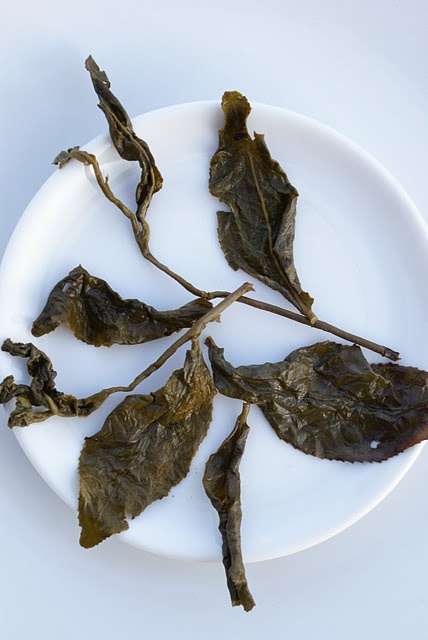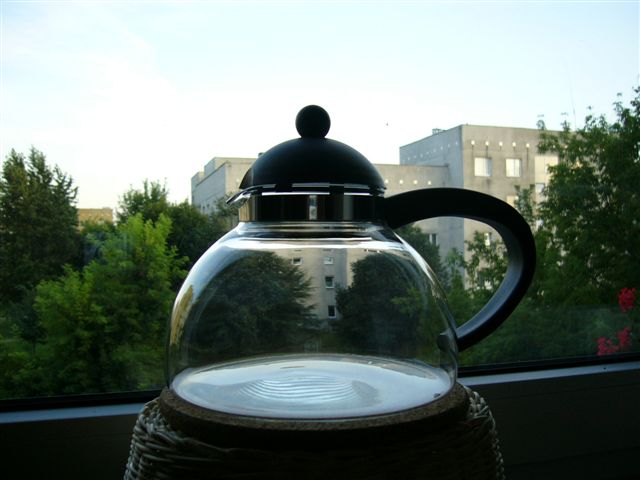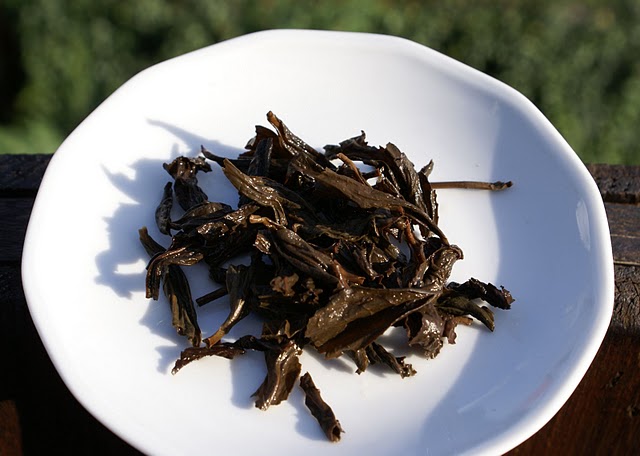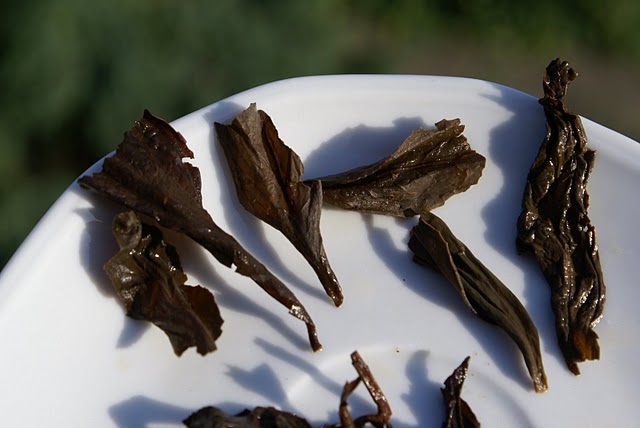Tea and chocolate
An exercise matching tea and chocolate. Can this work at all? Isn’t chocolate too powerful to have with tea? I try some artisanal chocolate pralines with green, oolong, black and puer tea.
An exercise matching tea and chocolate. Can this work at all? Isn’t chocolate too powerful to have with tea? I try some artisanal chocolate pralines with green, oolong, black and puer tea.
How to brew decent tea while travelling? Without access to infinite tea supply from your own tea cabinet and 25 brewing utensils. The answers are: keep it simple; carry your own tea; choose a tea that will perform well in less-than-perfect circumstances.

But there’s another aspect to that. Overdo that Wagner listening, and all his operas will seem like one repetitive ramble. After two weeks of drinking only Japanese shincha three or four times a day, I didn’t feel like having more, and all those notes of green fruit and mild astringency on the palate really didn’t make much difference. So it’s good to switch to something different after a while. Yet the first sips of that ‘different’ tea (wine, food, music) always seem strange. Everything’s out of sync. The mouthfeel is not what it’s supposed to be. Even a tea’s colour can seem anomalous.
 These leaves are very slow to open…
These leaves are very slow to open…But in my case, the tea had to be special. With so many old wine vintages being poured, I wanted a tea with several decades on it. Old puer was best avoided, though, as the taste could be challenging to some diners. So I went for this 1976 Baozhong from Tea Masters (see description here
; the tea is out of stock at the moment, although Stéphane says it might be available again in the autumn).Last week’s anniversary dinner was an eye-opener for this Baozhong, after circumstances forced me to change my brewing style. To accommodate so many people, I had to choose a really large pot. My choice went for this glass pot which contains roughly a liter:
It’s the equivalent of what is called ‘glass brewing’ or ‘bowl brewing’ (see discussions here
 Looking at the wet leaves, it’s no surprise this tea is so good. The roast has been really virtuosic as many leaves are still dark green in colour (have a closer look at the twisted leaf to the far right of the photo below). And for their age, they are really impressively intact. On top of it, it’s a really inexpensive tea for its age (40€ / 100g). Dear Stéphane, I truly hope you can source some more!
Looking at the wet leaves, it’s no surprise this tea is so good. The roast has been really virtuosic as many leaves are still dark green in colour (have a closer look at the twisted leaf to the far right of the photo below). And for their age, they are really impressively intact. On top of it, it’s a really inexpensive tea for its age (40€ / 100g). Dear Stéphane, I truly hope you can source some more!
Jinxuan (a.k.a. as Taiwan No. 12) is one such variety of tea tree, and apart from good productivity it is known for its creamy or milk-like aroma. This is as much a blessing as a curse, as many unscrupulous producers of lower-end oolong simply boost this subtle natural aroma with artificial flavouring. The result, sold as ‘Milk Oolong’, can be so utterly repulsive I have pretty much lost any confidence in jinxuan altogether. I thank Stéphane all the more, therefore, for having sent this very enjoyable sample.
All in all this an enjoyable tea with a very subtle, unobtrusive ‘milky’ aroma. But it also shows why the jinxuan variety doesn’t have the pedigree of qingxin: this tea just lacks the structure, depth and finesse of the latter.
2g of leaf after 5 minutes of infusion.
A springtime delight
High mountain (gaoshan) oolong from Central Taiwan is one of the world’s best teas, and Shan Lin Shi is one of the most famous appellations (origins) here. No wonder, therefore, that leading Taiwan tea internet specialist Tea Masters are offering no less than a dozen varieties from each vintage including six from Shan Lin Shi alone, at the time of writing.
As the spring is here and I am waiting to place an order for 2009 oolongs, I am slowly finishing my sample of the 2008 Shan Lin Shi Spring Luanze. As most of the top gaoshan oolongs, this is made from the qingxin tea cultivar, also known as luanze (and identified as such on the Tea Masters catalogue). There will be experts around to explain it fully but the reason why qingxin is preferred to other tea cultivars (such as jianxuan or the most widespread sijichun) is the inimitable buttery mouthfeel it gives, along with good ageing potential for the more roasted types.
See here for background about this tea, which was picked on 30th April 2008 at 1650 meters of altitude and underwent no roast; the oxidation is also rather low, giving a tea that’s close to a green in aroma and lightness, but showing a bit more substance and sturdiness than most green teas.
Price: 28 € / 100g (and worth every penny)
Brewed in: gaiwan
Dosage: 4 g / 120ml
Leaf: Appearance is the usual tightly rolled green leaf with a bit of stem attached. Dry leaf aroma is clean and very pleasant, reminiscent of the leaves and petals of first spring flowers (tulips perhaps).
Brewing #1 (30 seconds).
Tasting notes:
30s: The aroma is surprising for a gaoshan in being only vaguely floral, and quite vegetal-leafy. Flavour is again less floral than many teas of this style: mild, soft, light, with only a bit of dryness on end. As it cools down there is quite an inviting velvety texture and an understated, clean, satisfying vegetal taste.
30s: Seems denser in texture and flavour, with some grainy, mealy notes adding to the vegetality.
30s: Now a little lighter, no floweriness at all, and some grip on the finish. In fact this is going along the lines of brewing #2 in showing a touch of roast perhaps (?? Tea Masters are indicating there is none): against many featherlight and unsubstantial renditions of Shan Lin Shi, this tea has guts, and has in fact survived the 360 days of ageing more than well. Altogether a highly satisfying version of its appellation. Stay tuned for tasting notes of other SLS types offered by Tea Masters.
Within a recent order from Taiwanese specialist
Tea Masters, though, I ordered a small pack of a local green tea. Taiwan produces several types: Biluochun is common (an emulation of the Chinese classic from Jiangsu), as well as some greens from the qingxin tea cultivar (widely used in Taiwanese mountain oolongs). This tea, the 2008 Bailu, is made from a recently developed cultivar with the irresistibly romantic name of No. 17, also know as Bailu, meaning white crane.Brewed in: gaiwan
Dosage: 3.5g / 100ml
Dry leaf: A nice looking tea, with about 20% furry tips, and lots of bright green leaves alongside the more usual dark greens. Smells of summer meadow and toasted bread.
Wet leaf: Impressive quality, with no damage to the carefully selected leaves. They take quite a number of brewings to fully open. I remain impressed by the consistently high quality of the Tea Masters selections. Tasting notes:
60s: A very pale, white-coloured infusion. I find
Overall this tea has quite a distinctive, grapefruity profile that I find quite unvegetal for a green tea. Original, enjoyable and fairly priced (22€ / 100g).
Brewed in: gaiwan
Wet leaf: Consistently large and healthy-looking but showing a bit more oxidation round the edges than I expected.
30s @ 90C: First impressions are very positive, with a wonderfully intense floral nose of white lilies and peonies. Palate shows a degree of depth. Not a lot of body, this is very typical of a green oolong and is showing rather light really.
40s with boiling water: Interesting how the register shifts towards pink lilies and other dark flowers; there is also a minor impression of leaf burn so I recommend cooling the water just a bit.
Sub –15C, the poor pheasants sleep on the trees. Not quite the season for this light tea…